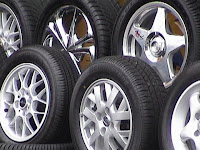
When buying a digital camera there are many things you should consider. First you should understand how a digital camera works. What you are using your digital camera for will help you decide what features to consider and how much you should spend. I am here to educate you and help you decide.
Let’s start with understanding how a digital camera works. A digital camera uses semiconductor chips instead of conventional film. It’s usually a Charged Coupled Device (CCD). When your shutter opens, light strikes the CCD, temporary electronic changes to the CCD and converted into computer language and recorded on either internal or removable memory. After which the images can be viewed on a small screen located on the back of the camera. Later, then of course downloaded to a computer. Did that make sense? It probably didn’t if this is your first time buying a digital camera. Let’s move on.
Today there are endless cameras to choose from. You obviously have a price range in mind. If you are mainly using it to exchange snapshots over the internet or for creating quick and simple advertising, don’t expect to spend more than $500.00. If you want some control over creation and images, expect to spend between $600 and $2000, especially if you want to make prints on a printer capable of “photo quality” reproductions. If only the ‘best will do’ for you than don’t expect to spend anything less than $5000.
You also have to consider what features you would like. The heart of the camera is the CCD. The larger it is, the more pixels it contains. As expected, the more pixels, the more it costs. If you just want to email your mom 500 miles away a snap shot of a 3 x 4 of your first born, a CCD with about 640 x 480 pixels will do. If it’s a 5 x 7, than do not settle for less than 1280 x 1024 pixels. An 8 x 10 demands about 2000 x 1500 pixels. Also important things to consider are memory, types of flashes, and ease of download.
Depending on what you plan to use your digital camera for will depend on how much you will spend. Keep the previous and following advice in mind before you leave to purchase your first camera and maybe it will be your last.
A. Start out with the least expensive camera that will do the job today.
B. Make sure that the camera you are purchasing is compatible.
C. Ask if the camera you are purchasing can accept an external power supply. Digital cameras eat power faster than your car. You don’t want to spend endless amounts of time sitting in line buying batteries for your camera.
D. See if the software that comes with your camera has a photo-editing program.
E. Lastly, ask your friends, neighbors, relatives how satisfied they are with their cameras.
If you’re one of those people who have never owned a digital camera in their life revise this list before hopping into your car and heading off to purchase one.
• Find out what you’ll be using it for. Walking into a camera store can be quite overwhelming. Hundreds of cameras ranging from the size of a credit card to as wide as a computer manual. It may be cute to carry around a sleek little red digicam, but you will have to consider what you’re actually going to use it for.
Do you need a compact one to store in your handbag? Are you planning to take professional photos for work? Does the number of features matter to you? Do you want a camera with manual functions? You don’t want to bring home a camera that doesn’t satisfy your needs, or purchase one with so many features that you won’t be able to use.
• Be familiar with camera specs. All those fancy words on the box might make it look like your wallet sized camera will turn you into a professional shutterbug. Mega Pixel is the maximum resolution per photo--the higher the MP, the bigger the prints you can get without it looking blurry. If you’re only planning to exchange photos on the internet, then a 2MP camera is fine. Optical Zoom and Digital Zoom are two different things—most pros snub Digital Zoom, since this is actually a software function that crops the image, which makes it lose its quality.
• Budget. We’re not going to lie: digital cameras don’t exactly come cheap. When budgeting on which camera to take home, consider the features, its size, its Mega Pixel count, and the brand.
Most photographers swear by one brand over the other. If you’re particularly loyal to just one brand, then you can shun the others and bask in just one aisle. But if you’re a little bit more open-minded, then you’ve got a bigger playground to frolic in.
You’ll also need to see what kind of memory card (which is sort of like the “film” of the camera) the camera needs, and what kind of batteries fuel it. Most digital cameras use AA batteries, so investing in a bunch of rechargeable ones is key.
• Try it out. Most people make the mistake of reading the box, swiping their credit card, and coming home to find out that they’re not comfortable with their latest purchase. While in the store, try taking a bunch of photos. Make sure it fits well in your hand, and it’s easy to use. The most user-friendly cameras out there are Canon, Casio, and Kodak—but you might want to try out others. Take your time in familiarizing yourself with the possible units you’ll be taking pictures with.
By Kathleen Wade
 The world is going digital and people are crazy about the hi-tech gadgets available in the market. But significantly paving the way is one of the hottest consumer products of the 21st century - the digital camera. Most people want to capture and store their precious moment forever in a form of pictures. And photography plays an important role in this business.
The world is going digital and people are crazy about the hi-tech gadgets available in the market. But significantly paving the way is one of the hottest consumer products of the 21st century - the digital camera. Most people want to capture and store their precious moment forever in a form of pictures. And photography plays an important role in this business.








